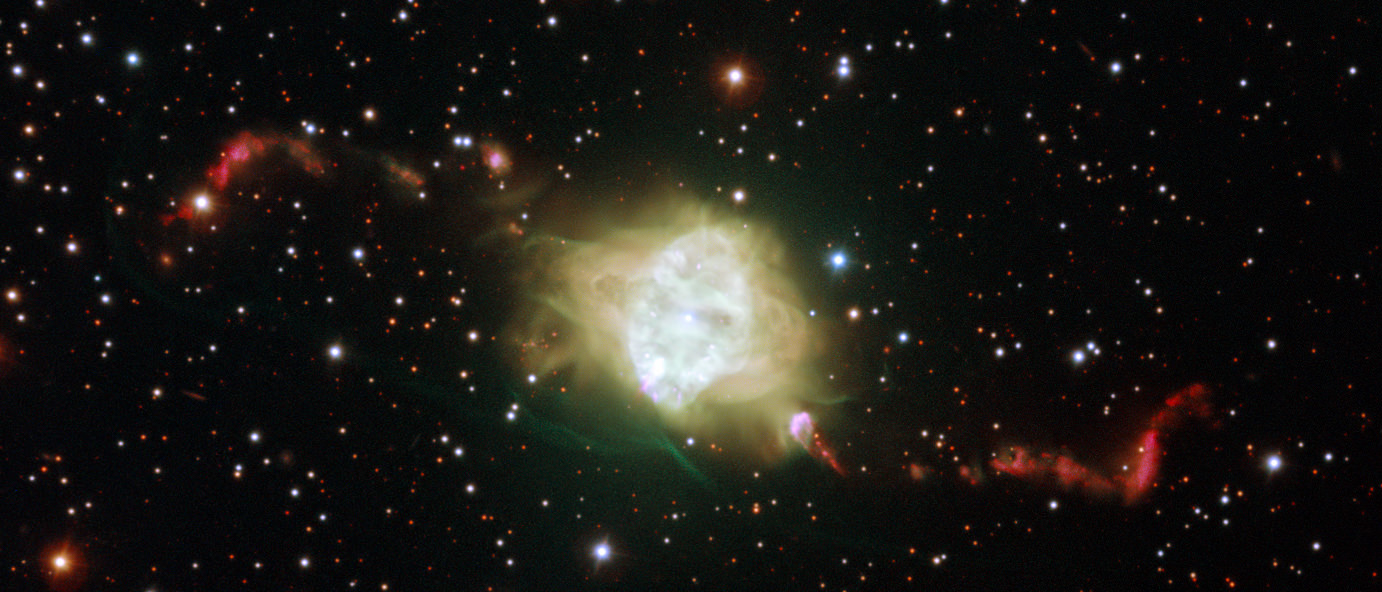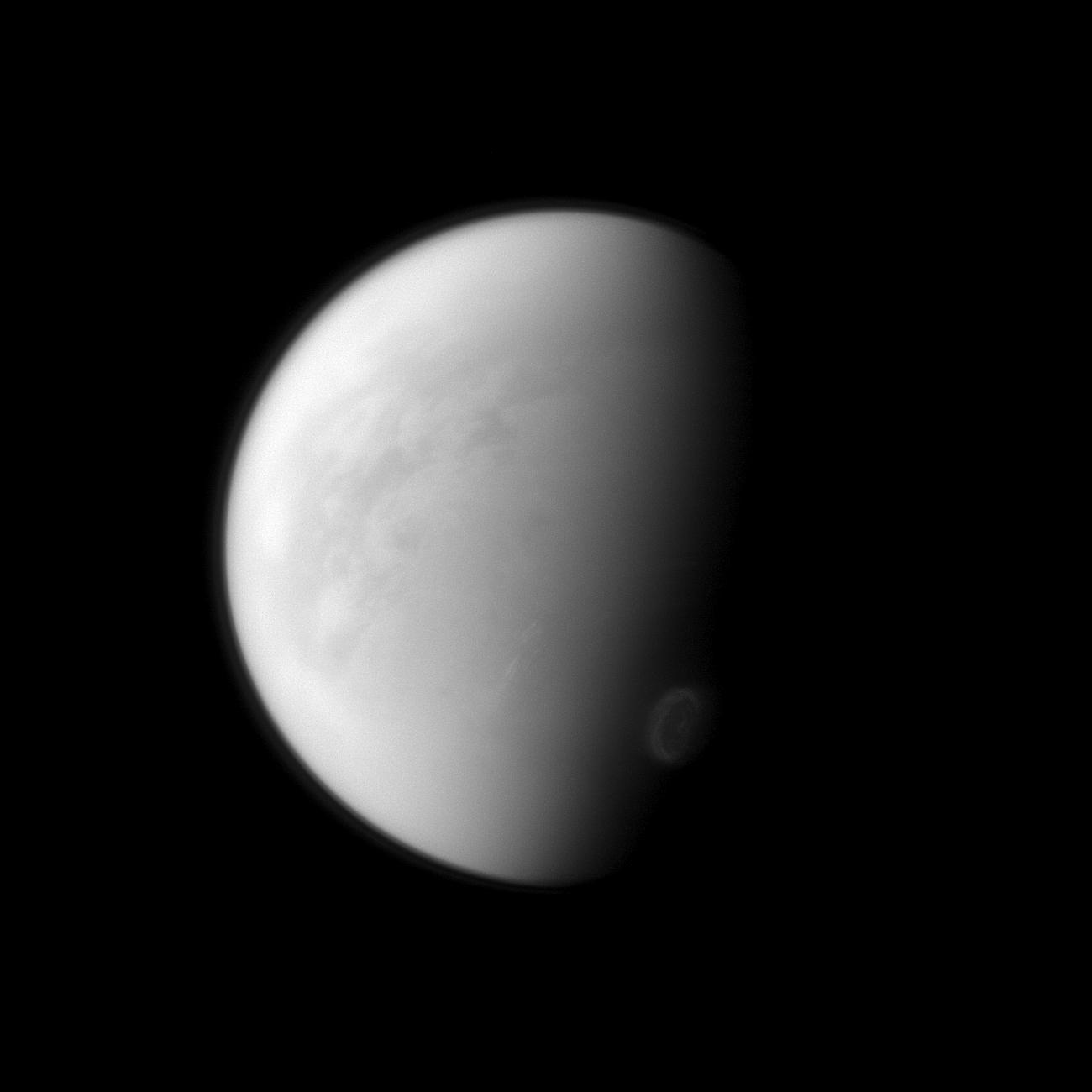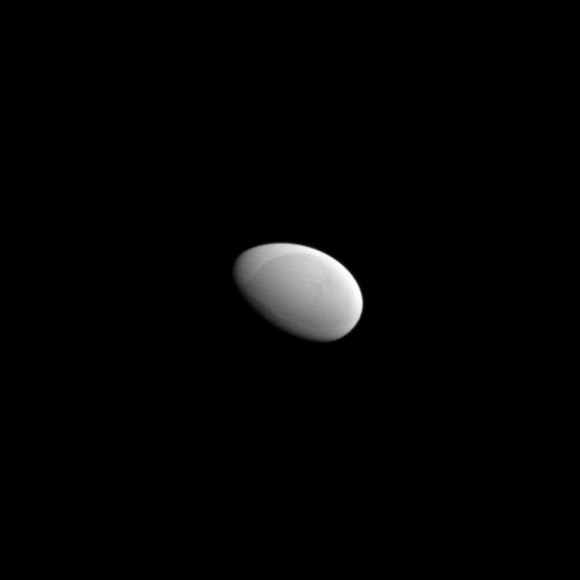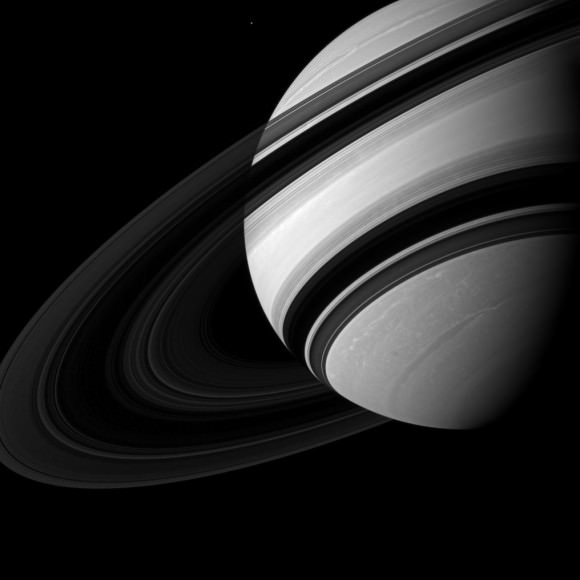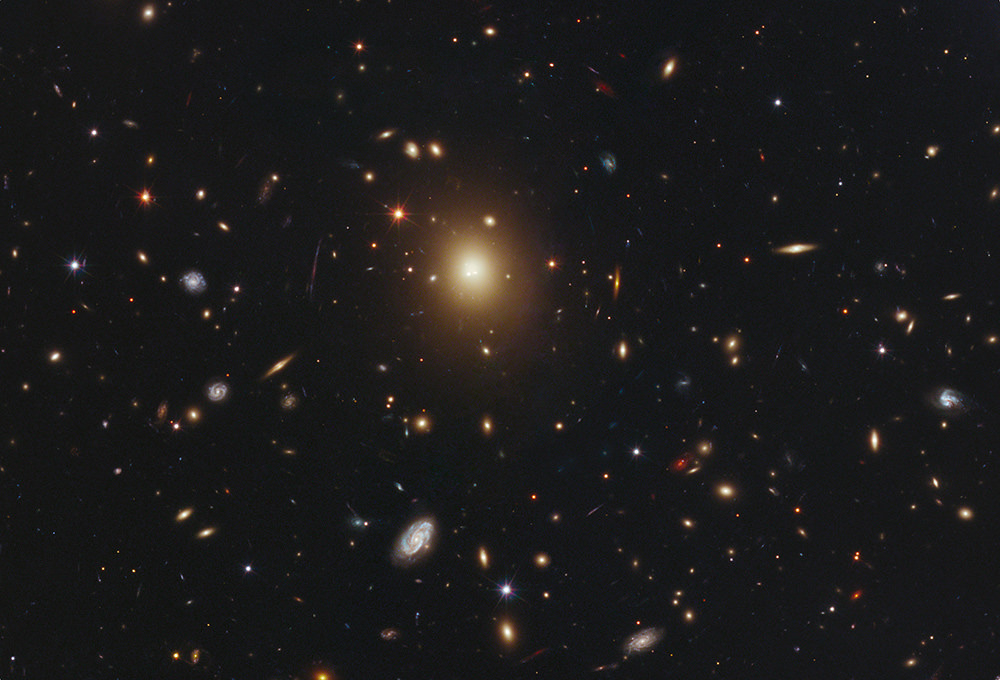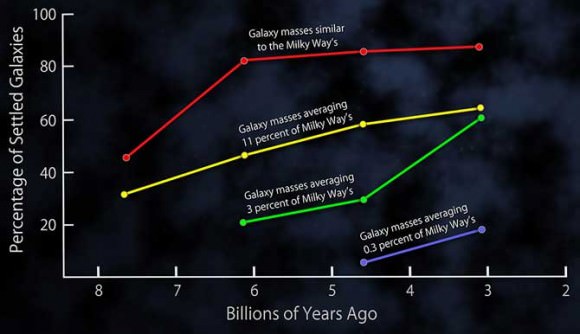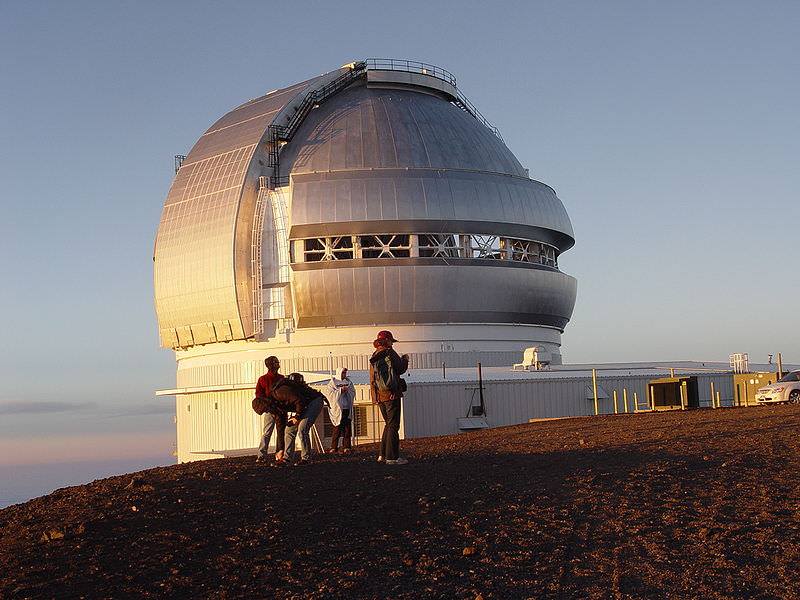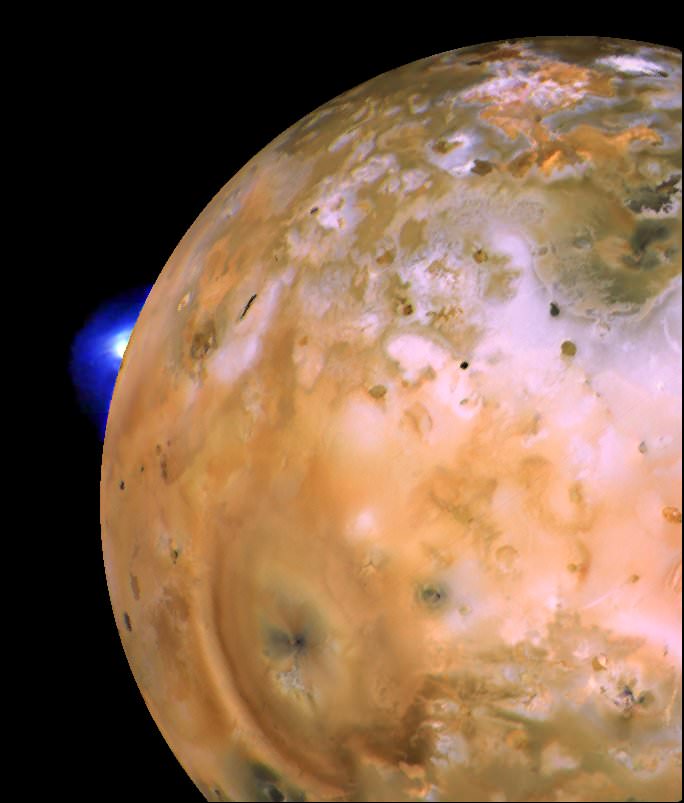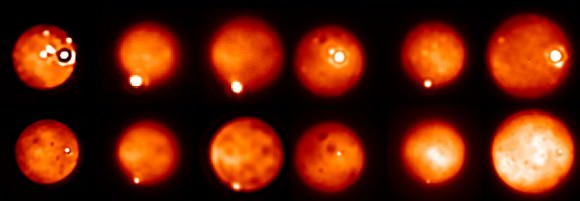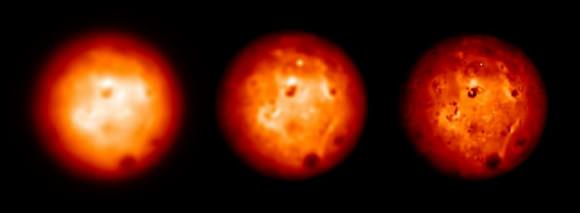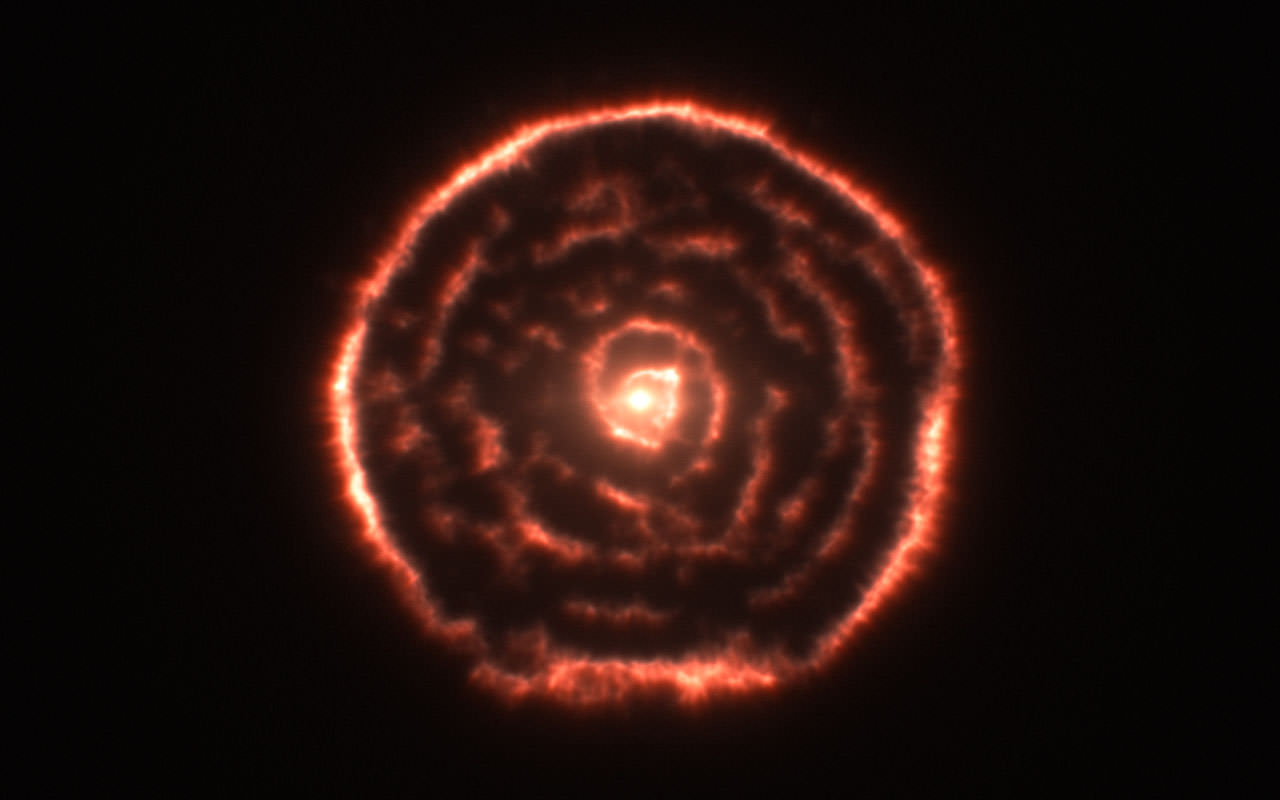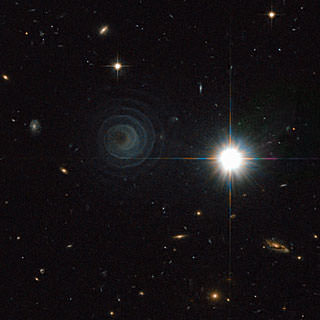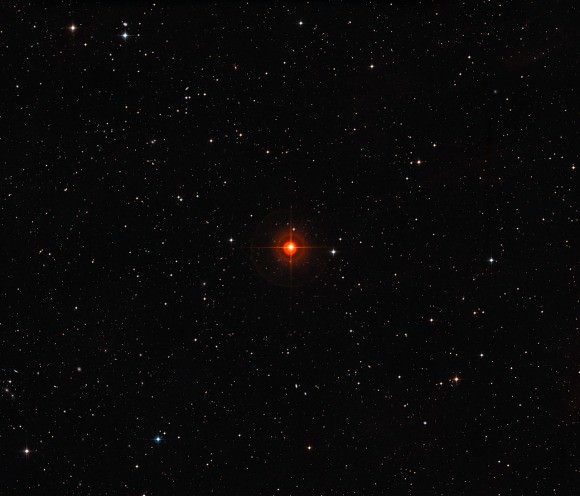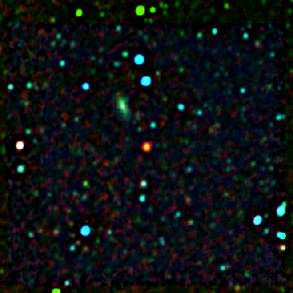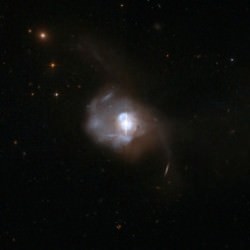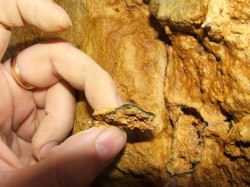The planetary nebula Fleming 1, as seen with ESO’s Very Large Telescope. Credit: ESO/H. Boffin
The neat thing about planetary nebulae is that they are like snowflakes: no two are quite the same. Some look like pools of hot water, some look like glowing eyes in the night and others, like this image of Fleming 1, have twin jets of material spiraling outward from the center resembling a huge cosmic sprinkler.
And for the first time, astronomers with the European Southern Observatory have paired new Very Large Telescope images of Fleming 1 with computer models to explain how the intricate dance between two dead stars result in these bizarre nebulae that appear to be flinging material out into space. The team’s findings were published in the November 9, 2012 issue of the journal Science.
“The origin of the beautiful and intricate shapes of Fleming 1 and similar objects has been controversial for many decades,” says team leader Henri Boffin in a press release. “Astronomers have suggested a binary star before, but it was always thought that in this case the pair would be well separated, with an orbital period of tens of years or longer. Thanks to our models and observations, which let us examine this unusual system in great detail and peer right into the heart of the nebula, we found the pair to be several thousand times closer.”
The team using ESO’s VLT to study Fleming 1’s central star, toward the constellation Centaurus, found not one but two white dwarfs at its core. The two white-hot dead stars slightly smaller than our Sun circle each other every 1.2 days. Binary stars have been found at the heart of planetary nebulae before, but two white dwarfs circling each other is very rare, say the scientists.
Planetary nebulae have nothing to do with planets. Astronomers in the eighteenth century likened these glowing bubbles of light to planets because they resembled the distant orbs Uranus and Neptune in their small telescopes. Planetary nebulae are actually a brief stage at the end of a sun-like star’s life. As a star with a mass up to eight times that of our Sun nears the end of its life, it sloughs off its outer shells in an immense bubble. As more and more mass is lost to space, the white-hot stellar core is exposed. This white dwarf gives off a stiff solar wind that pushes the bubble ever wider. Blistering ultraviolet radiation from the dead star excites atoms in the expanding cloud causing it to glow.
This animation shows how the two stars at the heart of a planetary nebula like Fleming 1 can control the creation of the spectacular jets of material ejected from the object. Credit:ESO/L. Calçada. Music: delmo “acoustic”
Gazing into a planetary nebulae rarely reveals a quiet environment. Complex knots and filaments form intricate patterns. For cosmic sprinklers like Fleming 1 material seems to be shooting from both poles with an S-shaped pattern between the star and the outermost wavefront. Scientists say that as the stars aged, they expanded and one sucked material from its companion; a kind of starry vampire, forming a spinning disk of material. As they rapidly orbited each other, the pair began to wobble like a spinning top, a type of motion called precession. The team’s study shows that precessing accretion disks within binary star systems form the symmetrical arcs of material in planetary nebulae like Fleming 1.
The VLT images revealed even more surprises about Fleming 1, named after Scottish astronomer Williamina Fleming in 1910. Scientists found a knotted ring of material within the inner nebula of Fleming 1. Scientists look for these rings as a sign of a binary system.
Source: European Southern Observatory

